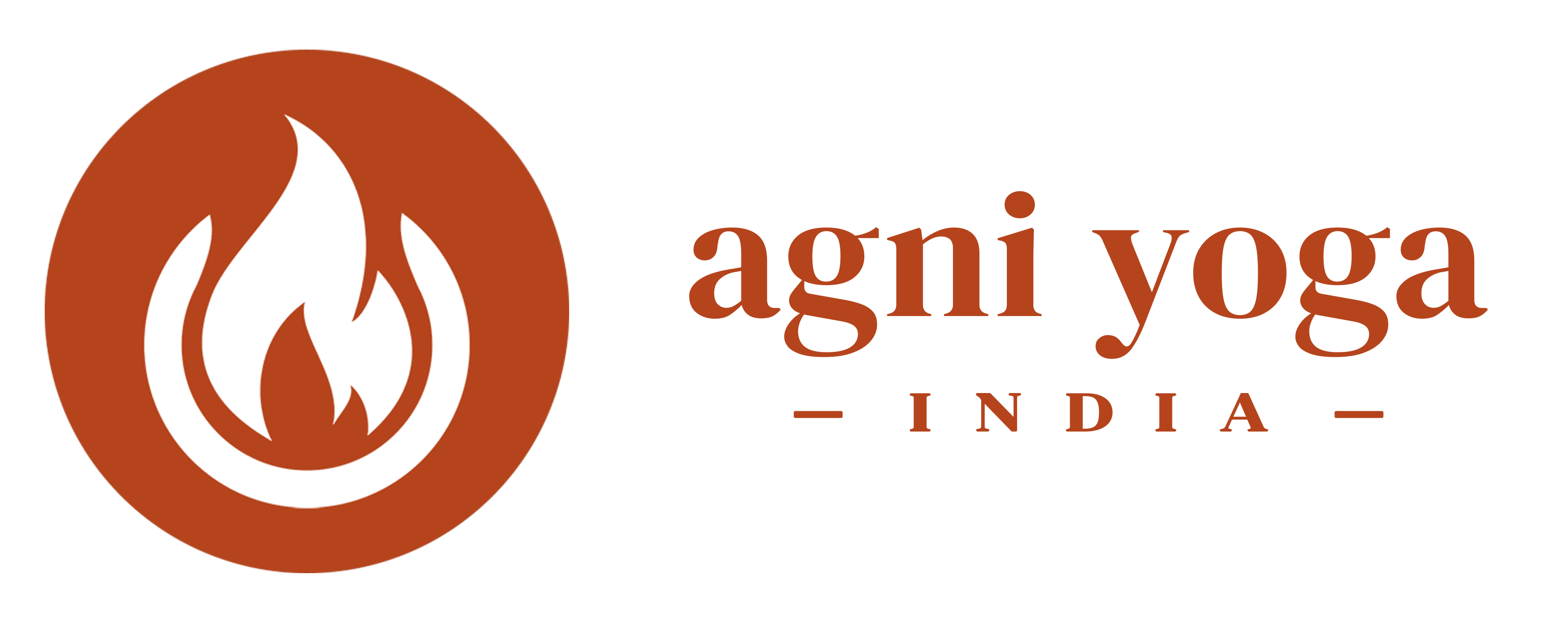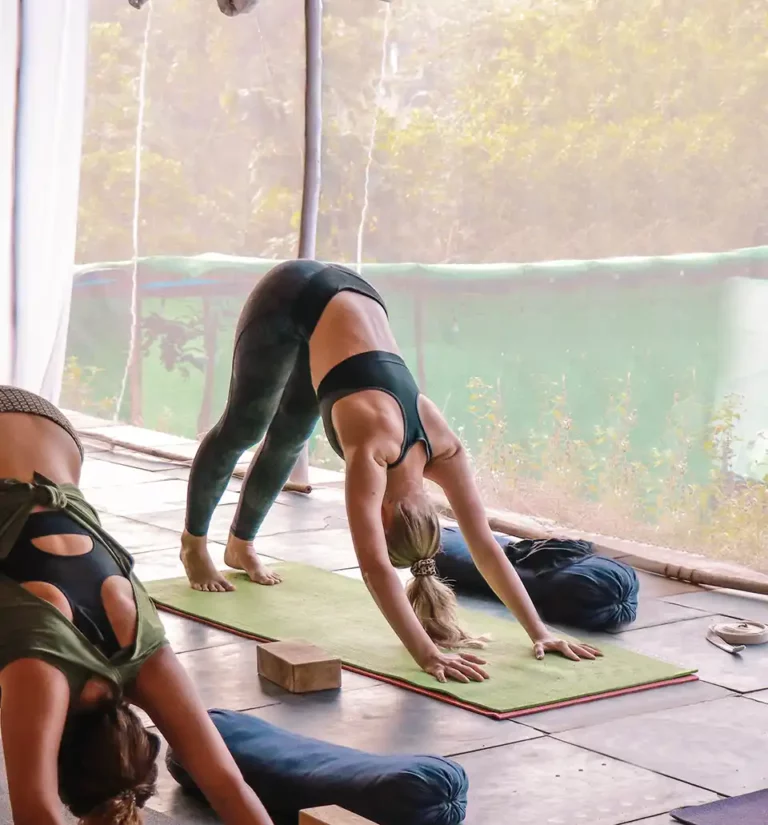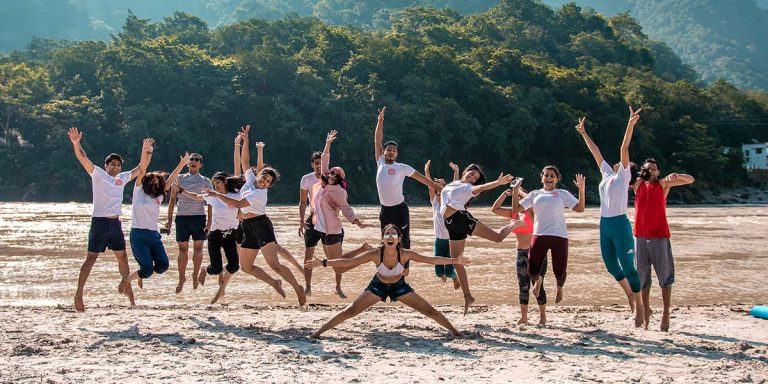100 Hour Yoga TTC
The 100 Hour Yoga TTC at Agni Yoga India is designed for all levels of yogis, including beginners. No matter how basic or advanced your practice is, or you’re just exploring yoga, the course will teach you the principles of yoga and assist you in building a strong foundation for both your practice and teaching.
After you have completed a yoga teacher training course with us, you will return with an in-depth theoretical and practical knowledge of yoga studies and its philosophy.
With our curriculum, you will get a comprehensive yoga education that will guide you in your personal and spiritual development by integrating body, mind, and breathing practices.
Our 100 Hour Teacher Training program’s curriculum is designed and crafted in line with the Yoga Alliance’s TTC guidelines. The foundation of our yoga programme is based on Patanjali’s yoga sutras.
Objectives and Benefits of 100 Hours Yoga TTC
Irrespective of your level of practice, our 100 Hour Yoga TTC will equip you with all the necessary skills that you’ll require to become a yoga teacher. The objectives of this program are –
- Get into the yoga discipline by creating a daily yoga practice routine for yourself.
- Daily practise of dhyana, kriyas, mudras, and pranayama.
- To understand and learn about the skeletal and muscular systems and how it relates to your practice and teaching.
- To learn the Patanjali Yoga Sutras and how to follow and apply them to your everyday practice and life.
- To understand how to create a structure and flow for a class by incorporating all of the elements you learned.
- To gain the skills to teach and conduct classes.
Who is this course meant for?
If you have a strong desire to learn more about yoga, its practises, and philosophy then this course is meant for you. This teacher training course will provide you with a thorough understanding of yoga, regardless of whether you are new to yoga, you are a yoga practitioner or a teacher who wants to learn more or advance your knowledge.
This course is meant for you if –
- You want to deepen your knowledge of yoga and increase your knowledge beyond asanas.
- You have been practicing yoga intensively and continuously, and want to move to the next level.
- You want to learn how to find and maintain the balance between body, mind and soul.
- You want to go explore and go deeper in your practice of asanas, meditation and self-awareness.
- You are looking for a safe and well-maintained yoga institute that provides a friendly yet challenging environment to learn and grow.
- You have a strong desire to share your knowledge of yoga with others.
Course Overview
The course curriculum covers the core aspects of yoga that include Pranayama (breathing practice), shat kriya, asana practises, yoga philosophy, yoga anatomy, relaxation (Yoga Nidra), and meditation. This course involves the intense practice of Ashtanga, Hatha and Vinyasa Yoga.
The total duration of the course is 13 days including rest days. On the rest days, our school arranges for extracurricular activities, which may include weekend excursions and activities in and around Rishikesh, sound healing sessions, and group activities like kirtan and students’ talent show.
Ashtanga Yoga
The eight limbs of the Ashtanga Yoga primary series—yamas, niyamas, asana, pranayama, pratyahara, Dharana, dhyana, and samadhi—are the highlight of this multi-style yoga course. K. Pattabhi Jois developed a set of asanas known as Ashtanga yoga that feature stronger and longer stretches, deep breathing exercises, and techniques for stress management. The purpose of asana alignment sessions in the program is to correct your posture alignment for a deep impact.
To help you lead a balanced life, this extensive curriculum also covers yoga philosophy based on the principles of Patanjali’s Yoga Sutras.
When the course is over, you’ll be equipped to practice and instruct the entire series of asanas with your style and at your speed.
Hatha Yoga
Hatha yoga aims to build physical strength and a conscious relationship with the body. The name “Hatha” is a Sanskrit term that means “discipline of power.” Hatha Yoga is the foundation of yogasanas. We will constantly encourage you to infuse your teaching methods with creativity.
You will also have the chance to learn about Yin and restorative yoga as part of our 100 Hour Yoga TTC, which will enhance your experience and knowledge of other yoga practices and traditions.
Detailed Curriculum for 100 Hour Yoga TTC
The 100 hour yoga TTC curriculum covers the Ashtanga Yoga Primary series with main focus on the standing postures. Therefore, you’ll be learning a lot about body balancing, breath regulation during the standing poses, stabilizing your gaze for concentration and controlling your mind to stay in the postures. This course will also help you learn self-correction of the postures and develop the confidence to do them correctly without an instructor. You will learn the basic skills of becoming a beginner level yoga teacher.
The 100 hour yoga TTC is also acts as the stepping stone towards the next level i.e., 200 hour yoga, as it covers the 50% curriculum of the 200 hour yoga TTC. Below is the detailed curriculum that will be covered over the duration of 13 days.
Yoga Philosophy
- Introduction to yoga
- Definition of yoga
- Its philosophy and evolution
- Importance of discipline in the path of yoga
- Introduction to yoga sutras of Patanjali
- The concept of Hatha Yoga
- Different practices of Hatha Yoga
- Vrittis (mental fluctuations) and their classification
- Obstacles and distractions on the path of yoga
- Ashtanga yoga – Yama and Niyama
- About Asana, Pranayama, Pratyahara, Dharana, Dhyan, Samadhi
- Introduction to chakras and their functions
- Lives of yogis (Inspiring stories)
Yoga Anatomy
- Skeletal System
- Muscular System
- Muscle Functions according to Joint Movements
- Respiratory System
- Endocrine System
- Circulatory System
- Nervous System
- Digestive System
- Chakras
- Inversions
- Physiological Benefits of Asana
Shat karma (Cleaning Process)
- Introduction of shat karma
- Jal neti and sutra neti
- Eye cleansing (trataka and eyes cups)
- Vaman dhauti
- Kapalbhati
- Agnisara
Ashtanga Yoga (Asanas and Adjustments)
- Surya Namaskar A
- Surya Namaskar B
- Full Primary Series:
- Padangusthasana (Big Toe Pose)
- Padahasthasana (Hand Under Foot Pose)
- UtthitaTrikonasana (Extended Triangle Pose)
- ParivrttaTrikonasana (Twisted Triangle Pose)
- UtthitaParsvakonasana (Extended Side Angle Pose)
- PrasaritaPadottanasana A B C & D (Wide-Legged Standing Forward Bend)
- Parsvottanasana (Intense Side Stretch Pose)
- EkaPadaPadangusthasana A B C & D (Hands to Foot Squatting Pose I)
- ArdhaBaddhaPadmottanasanaUtkatasana (Half Bound Lotus Pose)
- Virabhadrasana A & B (Warrior Pose)
- Dandasana (Staff Pose)
- Paschimottanasana A B C & D (Seated Forward Bend Pose)
- ArdhaBaddha Padma Uttanasana (Upward / reverse) Plank Pose)
- TriangMukaikapadaPashimottanasana (Half Lotus Tip Toe Pose)
- JanuSirsasana A B & C (One Leg Folded Forward Bend)
- JanuSirsasana A B & C (Head to Knee Forward Bending Pose)
- Marichyasana A B C & D (Sage Twist Pose / One-Legged Seated Spinal Twist Pose)
- Navasana (Boat Pose)
- Bhujapidasana (Shoulder Press Pose)
- Kurmasana (Turtle Pose)
- SuptaKurmasana (Reclining Turtle Pose)
- GarbhaPindasana (Womb Pose)
- Kukkutasana (Cockerel Pose or Rooster Posture)
- BaddhaKonasana A & B (Butterfly Pose)
- Konasana (Angle Pose)
- UpavishtaKonasana (Wide-Angle Seated Forward Bend)
- SuptaKonasana (Reclining Angle Yoga Pose)
- SuptaPadangusthasana A & B (Reclined Big Toe Pose)
- UbhayaPadanghusthasana (Hand to Foot Pose)
- UrdhvaMukhaPashimottanasana (Upward-Facing Intense West Stretch)
- SetuBandhasana (Bridge Pose)
- UrdhvaDhanurasana (Upward Bow Pose)
- SalambaSarvangasana (Supported Shoulder Stand Pose)
- Halasana (Plow Pose)
- Karnapidasana (Knee-to-Ear Pose)
- UrdhvaPindasana (Embryo Pose)
- Matsyasana (Fish Pose)
- UrdhvaPadmasana (Upward Lotus Pose)
- Sirsasana (Headstand Pose)
- UrdhvaDandasana (Upward-Facing Staff Pose)
- BaddhaPadmasana (Locked Lotus Pose)
- Yogi Mudra – Yoga mudras are symbolic hand and finger gestures that enhance one’s journey within by facilitating the passage of energy subtly in the body.
- Uplutih
- Savasana (Corpse Pose)
Hatha Yoga (Asanas and Adjustments)
1. Dynamic Postures
- Pawanmuktasana (Wind Relieving Pose)
- Marjalasana (Cat Pose)
- Vyaghrasana (Tiger Pose)
- Surya namaskar (Sun Salutations)
2, Standing Postures
- Tadasana (Mountain Pose)
- Utkatasana (Chair Pose / Fierce Pose)
- Padhastasana (Hand Under Foot Pose)
- Trikonasana (Triangle Pose)
- ParivrttaTrikonasana (Revolved Triangle Pose)
- Parshwakonasana (Extended Side Angle Pose)
- Parivrtta Parshwakonasana (Revolved Side Angle Pose)
- Veerbhadrasana 1/2/3 (Warrior Pose)
- Ardhchandrasana (Half Moon Pose)
- Parsvottanasana (Intense Side Stretch Pose)
- (Wide-Legged Standing Forward Bend)
3. Inverted Postures
- Sirsasana (Headstand Pose)
- Sarvangasana (Shoulder Stand)
- Halasana (Plow Pose)
- Pinchamayurasana (Peacock Feather Stand)
- Adhomukhavrkshasana (Downward Dog Pose or Downward-facing Dog Pose)
4. Twisting Postures
- Ardhmatsyendrasana (Half Lord of the Fishes Pose)
- Parivrittijanusirshasana (Revolved Head-to-Knee Pose)
- Kati Chakrasana (Standing Spinal Twist)
5. Back Bend Postures
- Bhujangasana (Cobra Pose)
- Shalabhasana (Locust Pose)
- Matsyasana (Fish Pose)
- Ushtrasana (Half Camel Pose)
- Kandhrasana (Shoulder Pose)
- Chakrasana (Upward-Facing Bow Pose)
- Gomukhasana (Cow Face Pose)
- Setu Asana (Bridge Pose)
- Rajkapotasana (One-Legged King Pigeon Pose)
6. Forward Bend Postures
- Paschimotanasana (Seated Forward Bend)
- Janusirasana (Head on Knee Pose)
- ArdhpadamPaschimotanasana (Seated Forward Bend)
- PadprasarPaschimotanasana (Seated Forward Bend)
- AdhoMukhaSvanasana (Downward Dog Pose)
7. Balancing Postures
- Vrkshasana (Tree Pose)
- BakDhayan Asana (Crane Pose)
- Mayurasana (Peacock Pose)
- Natraj Asana (Lord of the Dance Pose)
- Garudasana (Eagle Pose)
8. Relaxation Postures
- Shashankasana (Rabbit Pose)
- Makarasana (Crocodile Pose)
9. Savasana (Corpse Pose)
Vinyasa Flow (Postures)
- On your feet yogasanas
- Seated Vinyasa Sequences
- Seated posterior stretch sequences
- On one leg yogasanas
- Supine sequence
- Bow pose sequence
- Triangle pose sequence
- Inverted posture sequence
- Meditative pose sequence
- Viseha Vinyasa karma
Bandhas
- Introduction of Bandha
- Uddiyana bandha
- Jalandhar bandha
- Mula bandha
- Maha bandha
Mudras
- Introduction of yogic Mudra
- Jnana and chin mudra
- Yoni mudra
- Bhairava mudra
- Shambhavi mudra
- Nasikagra mudra
- Prana mudra
- Maha mudra
- Maha vedha mudra
- Different mudras for better health
- Mudra for concentration
- Common mudras for daily use
Pranayama (Breathing Practice)
- Introduction of Pranayama
- Importance of Pranayama
- Yogic breathing technics for increasing awareness
- Benefits of pranayama
- Different Pranayama and general guidelines
- Nadi Sodhana pranayama
- Bhastrika pranayama
- Bhramari pranayama
- Surya Bhedi and Chandra Bhedi pranayama
- Sheetali and Sheetkari
- Ujjayi pranayama
Mantra Chanting
- What is a mantra and the benefits of chanting a mantra?
- Shanti mantra (the mantra of peace)
- Guru mantra (mantra for guru)
- Ganesh mantra (mantra for auspiciousness)
- Mahamrityunjaya mantra (Mantra of Lord Shiva)
- Gayatri mantra (universal prayer)
- YogenaCittasya (Sloka on sage Patanjali)
- Hare Rama, Hare Krishna (Maha mantra)
Dhyana (Meditation)
- Introduction to Meditation and Concentration
- Breathing Awareness Meditation
- Tips for developing concentration
- Bahir and Antar trataka
- Dynamic meditation (Osho meditation)
- Nada meditation (sound meditation)
- Ajapa Japa
- Antar Mouna (silence practice)
- Chakra meditation
- Third eye meditation
- Mantra meditation
- Yantra meditation
- 61-point meditation
- Yoga Nidra
- Inner visualization
Final Evaluation
The final evaluation will be conducted on 5 main factors –
- Written Test – The written test in the final evaluation will cover everything that is taught about yoga philosophy, yoga anatomy and pranayama in the class. The duration of the exam is 90 minutes and includes 5 questions on each subject.
- Asana Practical Test – You will be asked to demonstrate the Yogasanas by the evaluator.
- Attendance
- Performance
- Behaviour and Discipline
After the successful completion of the evaluation, you will be awarded a certificate by Yoga Alliance certifying you as Yoga Alliance Certified Teacher. With this, you will be able to teach yoga anywhere in the world.
Daily Schedule
Time | Activity |
06:30 – 07:30 | Shat Karma, Pranayama & Mantra |
07:40 – 09:30 | Hatha Yoga |
09:30 – 10:00 | Breakfast |
10:30 – 11:30 | Yoga Anatomy |
11:45 – 12:45 | Yoga Philosophy |
13:00 – 13:30 | Lunch Break |
13:30 – 16:00 | Self-Study / Free Time |
16:00 – 18:00 | Ashtanga Vinyasa & Alignment |
18:15 – 19:15 | Meditation |
19:15 – 19:45 | Dinner |
Guidelines
- Classes begin early in the morning.
- Always act with respect, both inside and outside the premises.
- Observe the guidelines set by Agni Yoga India.
- Students are required to return all the library materials before leaving the school.
- Alcohol consumption, smoking and non-vegetarian food are not permitted inside the school.
Transform Yourself into a Yoga Teacher
Our 100 Hour Yoga TTC is a hands-on course designed to prepare you to teach yoga to students of all skill levels.
By the time the course ends, you’ll be able to create and design your asana flow sequences and instruct confidently.
There will be several opportunities for you to teach during the course as well because our approach is a practical teaching methodology. Our instructors will encourage you to start some classes occasionally with mantras and prayers. By the end of the program, you’ll be prepared to instruct the entire class. To help you grow and develop your style, you will be given feedback from time to time by your teachers and peers.
Course Fee and Accommodation
Accommodation Type | Occupancy | Facilities | Fee (USD) |
Private | Single | 1 Double Bed in a Room | 999 |
Double | Twin-Shared | 2 Separate Beds in a Room Attached Bath and Toilet | 799 |
Couple | Double | 1 Double Bed in a Room Attached Bath and Toilet | 749 |
If you are a guest at a different residential accommodation and wish to pursue a 100 hour TTC, we also offer non-residential courses.
- Tuition fee without meals – USD 450
- Tuition fee with meals – USD 550
The course fee includes –
- 13 days accommodation.
- Daily nutritious vegetarian meals and herbal tea. If you have any dietary preferences or restrictions, please inform us in advance so that your stay is most comfortable.
- Course material includes notebooks, yoga mat, cleansing kit, etc.
- Weekend excursions.
Payment and Refund Policy
- The course fee does not include private accommodation outside Agni Yoga premises, airfare and airport transfers.
- You will be required to pay USD 200 at the time of enrolment. The rest of the payment should be paid at the time of arrival at Agni Yoga India.
- We do not offer a refund on any cancellations. You can postpone and reschedule the course for a later date but the booking amount is nonrefundable.
- In case the fee was paid in full at the time of enrolment and you decide to cancel, the amount of USD 200 will be deducted and the rest is refunded
Related Posts:
- Yoga Poses for Weight Loss: The Top 10 Advantages
- Yoga for Diabetes. How Stress Causes Diabetes.
- 5 Yoga Poses that give you relief from back pain
- 10 Benefits of daily yoga practice
- Why choose yoga as a career?
- Yoga Teacher Training vs Yoga Retreat. What should you choose?
- Methods to boost Endurance during Aerobic and Anaerobic Exercises.
- Yoga Teacher Training in Rishikesh India
- Why Join Agni Yoga India for Yoga Teacher Training in Rishikesh India?
- 500 Hour Yoga TTC in Rishikesh
- How to Dress Correctly for a Great Yoga Session? A Beginners Yoga Outfit Guide
- 15 Standing Yoga Poses That Will Build Full-Body Strength & Balance
- What is Ashtanga Yoga and Its Primary Series, Intermediate Series and Advanced Series?
- What is philosophy?
- What is Pranayama and Its Benefits? Types and Techniques for Beginners
- Yoga Retreat in Rishikesh
- Yoga Teacher Training Rishikesh India






